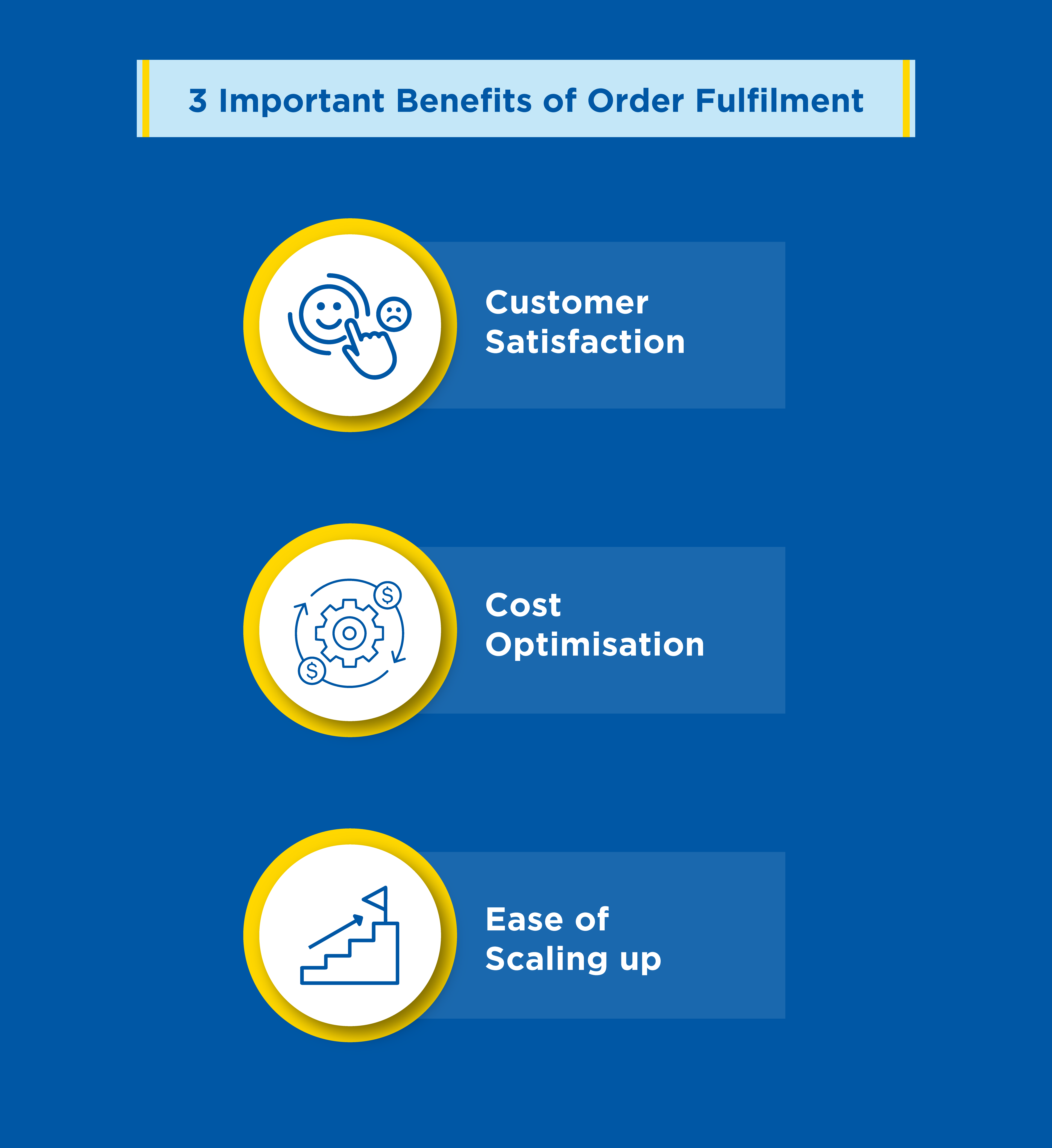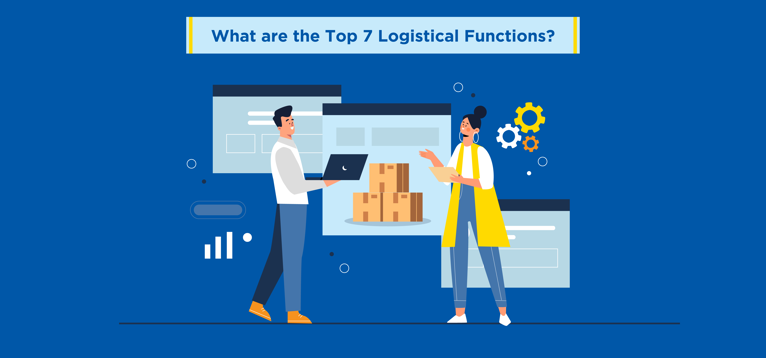Logistics is more than just the transportation of goods.
Modern logistics management is an amalgamation of multiple activities. It is the success of these functions that define the trajectory of logistics in a company.
Logistics functions are critical to increasing productivity, lowering costs, and managing inventory in an efficient manner.
Let’s take a look at these functions in detail.
Top Logistics Functions
1. Order Processing
The first and foremost activity in logistics is to process the orders. For example, if you’re an eCommerce company, the order processing starts as soon as the customer places the order on the website. In this step, it is the responsibility of the commercial department to ensure that customers meet the payment and delivery terms before processing the order.
Regardless of how the order is processed, the processing is what sets the whole tone of the rest of the logistics functions. The team passes on the order to the warehousing crew and informs them of the quantity and the delivery locations of the orders.

A logistics company check stock availability, facilitates production if needed, and reorganizes the order. It further checks the payment methods and delivery schedules before proceeding with the net step.
2. Handling Materials
After order processing comes material handling. It is the act of movement of goods around the warehouse in a way that facilitates the warehouse to fulfil the order efficiently. Material handling takes care of stocking finished goods in a storage facility, maintaining inventory records, predicting demand, and reordering stocks.
It’s easy to maintain stock levels if you’re operating at a lower scale. However, material handling is a function that consumes one of the highest levels of cost in the supply chain. As you scale, this is the function that you’d have to pay close attention to handling materials.
Large warehouses can be up to half a kilometre in length. Managers and supervisors can easily get confused as to how much inventory there is, how to transport it to the dispatch centre, etc. If done right, material handling saves ample costs in storage and dispatch.
3. Warehouse Management
Once you source the materials, you need to store them until they’re delivered. Warehouse management is a logistics function that will track the movement of the stock within different warehouses and interlink these activities. As the logistics industry undergoes the trends of micro-fulfilment and micro-warehousing, strategic warehousing is getting a lot of attention.
This logistics function ensures that the inventories are strategically located in small warehouses in densely populated areas. This way companies can meet the needs of quick deliveries to their customers while keeping the costs at a minimum.
The centres are smaller but placed such that the single unit isn’t overburdened. Automation in warehousing is also enabling companies to leverage intelligent route optimisation and cost-efficient deliveries.

4. Managing Inventory
Inventory management is all about maintaining sufficient stock to meet client demands. This logistics function has evolved over the years. Where traditional inventory management focused on managing the stock units, doing quality checks, and moving them across warehouses for deliveries, modern inventory management gives a core focus on inventory forecasting as well.
Having too much inventory or too little can both result in dreadful scenarios and you don’t want to be in either of them. Inventory management leverages demand forecasting tools to gauge future requirements based on purchasing history. Therefore, inventories are managed after careful, data-driven analysis, and timely restocking.
It is also the connecting link between inbound and outbound logistics as it involves maintaining relationships with suppliers as well as order fulfilment.
5. Transporation
Transportation is the logistics function where the goods physically move from the seller to the buyer. It is required at every step of the supply chain as the movement of goods from one place to the other is required when you source raw materials and when you make your final deliveries. There are various modes of transportation that logistics companies use such as rail, trucks, shipping, and air. Your choice depends on the state and area’s transportation system and the pricing.
Transportation comprises 60% to 70% of the overall logistics costs due to the high fuel costs and longer distances. All the other logistics functions ultimately have the goal to lower transportation costs. That’s why the better a company’s warehouse and inventory management, the cheaper the company’s transportation costs. Efficient transportation management determines the delivery success of the supply chain.
6. Packaging
A lot of things can go wrong in logistics if the packaging isn’t up to the mark. There is a risk of leakage and breakage when the goods are in transit or stored in the warehouse. Apart from maintaining the safety of the product, packaging also needs to include branding and marketing elements.
Packaging includes operations implemented to endure the transportation of goods both to and from customers. Even if you do everything else right, you won’t witness delivery success if the customer received a faulty product or your product packaging couldn’t sustain the deliveries in rough routes.
Packaging needs to be compliant with safety regulations and customs regulations that are essential to fulfil the delivery requirements.
7. Monitoring and Information
Logistics management is not a one-time activity. Logistics companies need to continuously monitor Inventory control, warehousing and transporting, everything needs to be monitored regularly. Each site needs to know about every other department and the entire supply chain situation, when and where to restock, where to deliver, etc.
You also need to keep on monitoring the latest technological and transportation advances, their prices, appropriateness of services, etc. The continuous monitoring of the storage spaces, labour schedules, and AI advances, helps you minimise costs and gradually increase delivery efficiency. With the right information and monitoring, logistics companies can get a competitive advantage.
Wrapping Up
Logistics functions as a whole contribute to logistics management. It is the success of each of these activities that determines the success levels in order fulfilment and customer service.
To can contact us at PACK & SEND to get end-to-end logistics solutions. We have the expertise, equipment and network to fulfil your tailored logistics needs and ensure timely deliveries that lead to a fulfilling customer experience.
Image source: scmwizard
